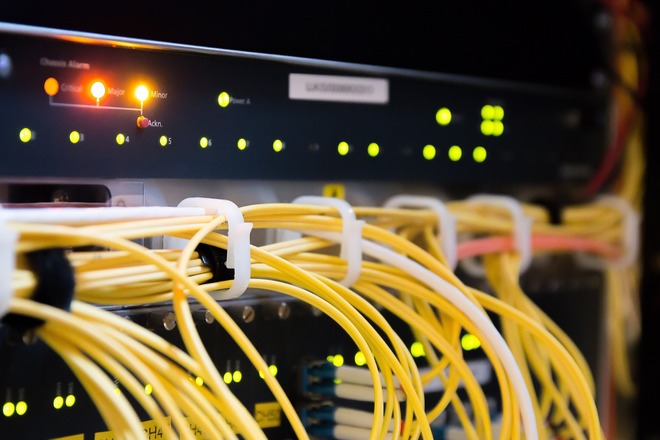What Is A Proxy Subnet & How Can It Impact Proxy Performance?

Proxy subnets are intermediary networks that provide an additional layer of security between an organization’s internal network and the Internet. Proxy subnets make it possible to better control access to the internal network. Additionally, they can be used to improve network performance by caching frequently accessed content. Many proxy services currently offer private subnet proxies, i.e. proxies associated with one subnet. So, how can it influence the overall Internet performance and effectiveness of your proxy servers?
In this article, we will discuss how the proxy subnet works considering some practical examples to understand this concept better.
What Are Subnets?
An IP subnet is a network of devices/IPs that share common address space and can communicate with each other faster as the traffic is routed more efficiently. The term “subnet” is short for “subnetwork“. A subnet can be created by dividing a larger network into smaller groups of IPs, known as subnets, each of which has its own distinct address space.
Advantages Of Using Subnets
Medium and large companies create a separate IP subnet for each department, such as finance, sales, and marketing. Each subnet has a unique network address assigned to all devices within it. Subnetting is a logical segmentation to divide a large network into smaller units. By using subnetting, network LAN administrators can easily manage the devices over the network as well as control LAN traffic, and optimize the network performance of the LAN as well.
IP subnets are created by dividing a network into smaller groups, each of which can be isolated from the others. For example, a network may be divided into two subnets: one for the private network and the other for the public network. The private network is to be used for sensitive data, while the public network can be employed for general web surfing. For example, if one subnet is used for video streaming and another is for mailing, the video streaming subnet will not be slowed down by email traffic.
How Does Subnetting Work?

Let’s say you have the IP address 192.168.0.1 and a subnet mask of 255.255.255.0. The first three octets of the IP address (192.168.0) belong to the network, and the last octet (1) belongs to the host. This gives us a range of addresses from 192.168.0.1 to 192.168.0.254 that all belong to the same subnet. The value of the host octets is used to identify the specific number of computers or any other IP-based network devices on the network.
Let’s look at one more example. This time, we’ll use the IP address 172.16.0.1 and the subnet mask 255.255.0.0. The first two octets of the IP address (172.16) belong to the network, and the last two octets (0.1) belong to the host. This gives us a range of addresses from 172.16.0.1 to 172.16.255.254 that all belong to the same subnet. As you can see, subnetting can be a very powerful tool for organizing and securing your network.
Computers within the same subnet can communicate with each other directly. However, computers in different subnets must communicate through a router. IP subnets are specified using the CIDR (Classless Inter-Domain Routing).
What Is A Proxy Subnet?
A “proxy subnet” is a specific type of subnet that is used to connect two or more networks together. Subnet proxies are typically used by corporations and organizations to connect their internal networks to the Internet. A subnet is typically assigned a range of IP addresses that are all within the same subnet. For example, a proxy subnet might be assigned the range of IP addresses from 192.168.1.1 to 192.168.1.254. In other words, it is a collection of IP addresses that are used to route traffic through a proxy server.
When a device on the private network attempts to connect to a public IP address, the router will redirect the request through the proxy server. The proxy server will then forward the request to the public IP address. A proxy server will also manage the connections going through it. This allows the router to properly direct return traffic back to the correct device on the private network.
How Does The Proxy Subnet Work?
The way proxy subnets work is actually quite simple, but there are a few things you need to know in order to avoid any potential issues. A proxy subnet is an intermediary network between your main network and the Internet. All traffic from your network to the Internet passes through the proxy subnet and vice versa.
There are two types of proxy subnets:
- 1. Internal proxy subnets
They are used to route traffic between two internal networks.
- 2. External proxy subnets
On the contrary, they are used to route traffic between two external networks.
The proxy subnet provides an additional layer of security between the user and the web server. It can be used to cache data that is frequently accessed by computers on the internal network. By using a proxy server, organizations can improve their internet connection speed and reliability while reducing the amount of bandwidth used.
To get an additional layer of security, you can get a private subnet for your network to keep it isolated and secure.
The disadvantage of using a proxy subnet is that it can add complexity to your network, and it can also introduce potential security risks. In order to avoid any potential problems, it is essential to understand how subnet proxies work and how to configure them properly.
Difference between Shared and Private Subnet Proxy?

A shared subnet proxy provides shared access to multiple users who probably use the same authentication credentials and shared bandwidth as well. If an advanced website records any abuse from a few IPs of the subnet, it may block the whole subnet instead of blocking those IPs only. Shared subnet proxies are cheaper than private ones.
However, the possible subnet-related issues don’t come down to shared proxies. Keep in mind that if you opt for datacenter proxy servers while scraping data, for example, you risk getting the whole pack of proxies banned given they come from the same subnet. That is why before choosing one particular proxy provider – make sure that it contributes to the solid subnet diversity. Anyway, you might be not the only one on the subnet – so, any user can compromise the subnet you also employ.
Addressing Subnet-related Issues
Are there ways to stay on the safe side, then? Of course.
- 1. Prioritize proxies without subnets
The first obvious recipe for mitigating risks is to opt out of the subnets at all. The point is that, unlike datacenter proxies, residential ones usually don’t have subnets. Moreover, if you need scraping proxies, you can opt for rotating residential proxy servers that change your IP every time you make a request.
- 2. Make a bid for subnet diversity
Several proxy services allow selecting IPs and replacing the blocked ones. So, you may compose the package of IPs from different subnets. As many providers have a reputation to uphold, they are likely to meet customer needs when being asked to mix the proxies in the package by including IPs from various subnets. Plus, prioritize providers with large IP pools to ensure they are always there to replace blocked proxies.
- 3. Create your own subnet
It’s a usual practice for companies and business owners to develop their own subnets to tighten the security of confidential data. While this method might be irrelevant for individual users due to its high cost, that’s a viable alternative for those running an enterprise.
